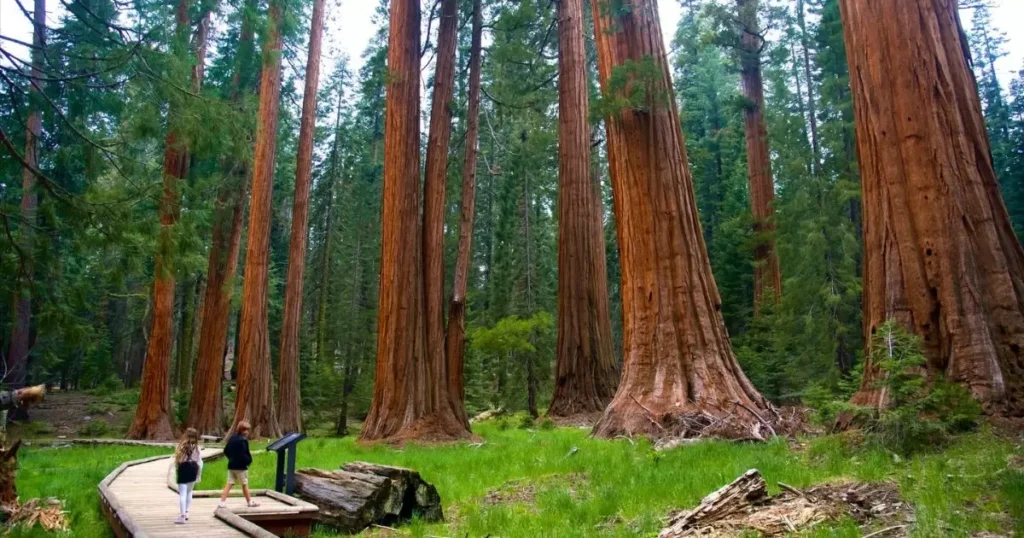Trees, the majestic and essential components of our ecosystems, provide oxygen, shade, and habitat for countless organisms. When observed collectively, these towering wonders are described using various collective nouns, each offering a unique perspective on their presence and significance.
In this article, we will explore the concept of collective nouns and delve into some intriguing examples specifically related to trees.
What Are Collective Nouns?
Collective nouns are words used to describe a group of individuals or things considered as a single entity. These nouns simplify our language and provide a more vivid and interesting way to refer to collections of objects, animals, or people.
For example, instead of saying “a group of birds,” we can say “a flock of birds,” which is more expressive and efficient.
Best Collective Nouns for Trees
- A grove of trees
- A forest of trees
- A stand of trees
- A cluster of trees
- An avenue of trees
- A canopy of trees
- A thicket of trees
- A copse of trees
- A woodland of trees
- A plantation of trees
Let’s explore each of these collective nouns in more detail.
A Grove of Trees
Explanation
A “grove of trees” typically refers to a small group or cluster of trees, often found in a park or garden setting.
Scenario
In the quiet corner of the park, a grove of trees provided a tranquil spot for picnickers to relax and enjoy nature.

A Forest of Trees
Explanation
A “forest of trees” describes a vast expanse of woodland, characterized by dense canopies and diverse ecosystems.
Scenario
As far as the eye could see, a forest of trees stretched across the landscape, teeming with life and activity.
A Stand of Trees
Explanation
A “stand of trees” refers to a group of trees growing closely together, often sharing similar species or characteristics.
Scenario
On the hillside, a stand of trees stood silently against the wind, their roots intertwined and their branches reaching for the sky.
A Cluster of Trees
Explanation
A “cluster of trees” denotes a small collection of trees gathered closely, perhaps in a clearing or at the edge of a meadow.
Scenario
In the center of the clearing, a cluster of trees provided shelter and shade for the weary travelers.
An Avenue of Trees
Explanation
An “avenue of trees” refers to a row or line of trees planted along a pathway or roadway, often for aesthetic or functional purposes.
Scenario
Driving down the boulevard, an avenue of trees lined the street, creating a picturesque scene of natural beauty.
What Are The Collective Nouns for “Sparrows”
A Canopy of Trees
Explanation
A “canopy of trees” describes the upper layer of foliage formed by the branches and leaves of tall trees, creating a dense and shaded environment below.
Scenario
Walking through the rainforest, a canopy of trees blocked out the harsh sunlight, casting a cool and mysterious atmosphere.
A Thicket of Trees
Explanation
A “thicket of trees” refers to a dense patch or cluster of trees and shrubs, often found in wild or untamed landscapes.
Scenario
In the heart of the wilderness, a thicket of trees provided cover and shelter for the elusive wildlife.
A Copse of Trees
Explanation
A “copse of trees” is a small group of trees, often found in rural or countryside settings, providing habitat and refuge for wildlife.
Scenario
Venturing into the countryside, a copse of trees dotted the landscape, creating pockets of greenery and biodiversity.
A Woodland of Trees
Explanation
A “woodland of trees” describes a large area covered with trees, typically smaller than a forest but more densely populated than a grove.
Scenario
Exploring the woodland, a variety of trees filled the landscape, their colors and shapes creating a natural tapestry.

A Plantation of Trees
Explanation
A “plantation of trees” refers to a large area of land specifically cultivated for growing and harvesting trees, often for commercial purposes.
Scenario
Driving past the plantation, rows upon rows of trees stretched across the horizon, their uniform appearance a testament to human industry.
Interesting Facts About Trees
Trees are vital to the health of our planet, providing oxygen, shelter, and nutrients for countless organisms. They play a crucial role in carbon sequestration, helping to mitigate climate change by absorbing carbon dioxide from the atmosphere. Trees come in a variety of shapes, sizes, and species, each adapted to thrive in specific environments.
Additionally, trees have cultural significance in many societies, symbolizing strength, wisdom, and connection to the natural world.
Final Thought
Collective nouns offer a rich and colorful way to describe groups of objects, animals, or people, providing insight into their nature and behavior.
The collective nouns for trees not only evoke images of natural beauty and majesty but also highlight the importance of conservation and appreciation for our environment.
Next time you find yourself among a group of trees, think about the various ways you can describe them and reflect on the significance they hold in our ecosystem.



